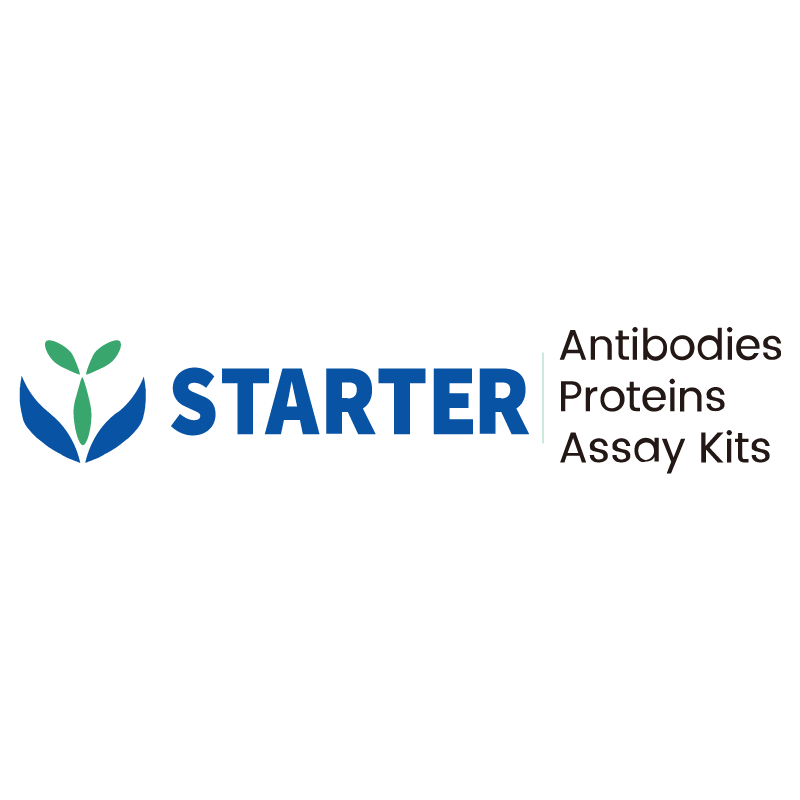WB result of Anti-Human CD11c Mouse mAb
Primary antibody: Anti-Human CD11c Mouse mAb at 1/1000 dilution
Lane 1: Raji whole cell lysate 20 µg
Lane 2: Jurkat whole cell lysate 20 µg
Lane 3: THP-1 whole cell lysate 20 µg
Negative control: Raji whole cell lysate; Jurkat whole cell lysate
Secondary antibody: Goat Anti-mouse IgG, (H+L), HRP conjugated at 1/10000 dilution
Predicted MW: 145 kDa
Observed MW: 145 kDa
(This blot was developed with high sensitivity substrate)
Product Details
Product Details
Product Specification
| Host | Mouse |
| Antigen | CD11c |
| Synonyms | Integrin alpha-X; CD11 antigen-like family member C; Leu M5; Leukocyte adhesion glycoprotein p150/95 alpha chain; Leukocyte adhesion receptor p150/95; ITGAX |
| Location | Cell membrane |
| Accession | P20702 |
| Clone Number | B-ly6 |
| Antibody Type | Mouse mAb |
| Isotype | IgG1,k |
| Application | WB, ICC, FCM |
| Reactivity | Hu |
| Purification | Protein G |
| Concentration | 2 mg/ml |
| Conjugation | Unconjugated |
| Physical Appearance | Liquid |
| Storage Buffer | PBS, 40% Glycerol, 0.05% BSA, 0.03% Proclin 300 |
| Stability & Storage | 12 months from date of receipt / reconstitution, -20 °C as supplied. |
Dilution
| application | dilution | species |
| WB | 1:1000 | |
| ICC | 1:500 | |
| FCM | 1:2000 |
Background
CD11c is a type I transmembrane glycoprotein of approximately 150 kDa, also known as integrin alpha X (Itgax). It is part of the complement receptor 4 (CR4) complex and, along with CR3 (also known as Mac-1 or CD11b/CD18), belongs to the β2-integrin family of adhesion molecules. CD11c is primarily expressed on dendritic cells (DCs), NK cells, a subset of intestinal intraepithelial lymphocytes (IELs), and some activated T cells. It is involved in cell adhesion, migration, and phagocytic functions, mediating the phagocytic process of DCs through its association with β2-integrin. Under conditions of early development and in certain neurodegenerative diseases such as Alzheimer's disease (AD), a subset of microglia in the central nervous system also expresses CD11c. CD11c+ microglia express genes such as Spp1, which encodes osteopontin (OPN), a cytokine-like phosphorylated protein involved in pathogenic and protective immune responses in peripheral lymphoid tissues. Additionally, CD11c serves as a marker for macrophages, whose expression aids researchers in identifying and characterizing these cells, thus contributing to a deeper understanding of their roles in immune and inflammatory processes.
Picture
Picture
Western Blot
FC
Flow cytometric analysis of human PBMC (human peripheral blood mononuclear cell) labelling Human CD11c antibody at 1/2000 (0.1 μg) dilution (Right) compared with a Mouse monoclonal IgG isotype control (Left). Goat Anti - Mouse IgG Alexa Fluor® 488 was used as the secondary antibody. Then cells were stained with CD14 - Alexa Fluor® 647 separately. Gated on total viable cells.
Immunocytochemistry
ICC shows positive staining in THP-1 cells (top panel) and negative staining in Jurkat cells (below panel). Anti- CD11c antibody was used at 1/500 dilution (Green) and incubated overnight at 4°C. Goat polyclonal Antibody to Mouse IgG - H&L (Alexa Fluor® 488) was used as secondary antibody at 1/1000 dilution. The cells were fixed with 4% PFA and permeabilized with 0.1% PBS-Triton X-100. Nuclei were counterstained with DAPI (Blue). Counterstain with tubulin (Red).


